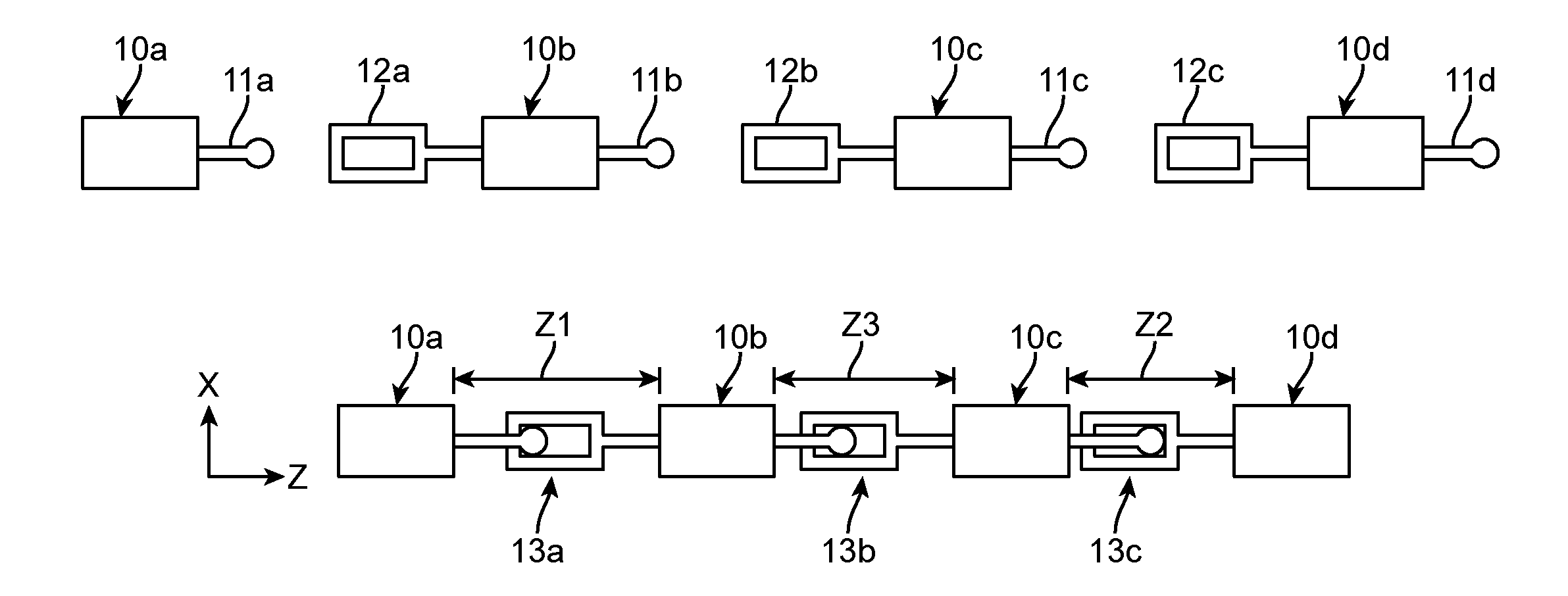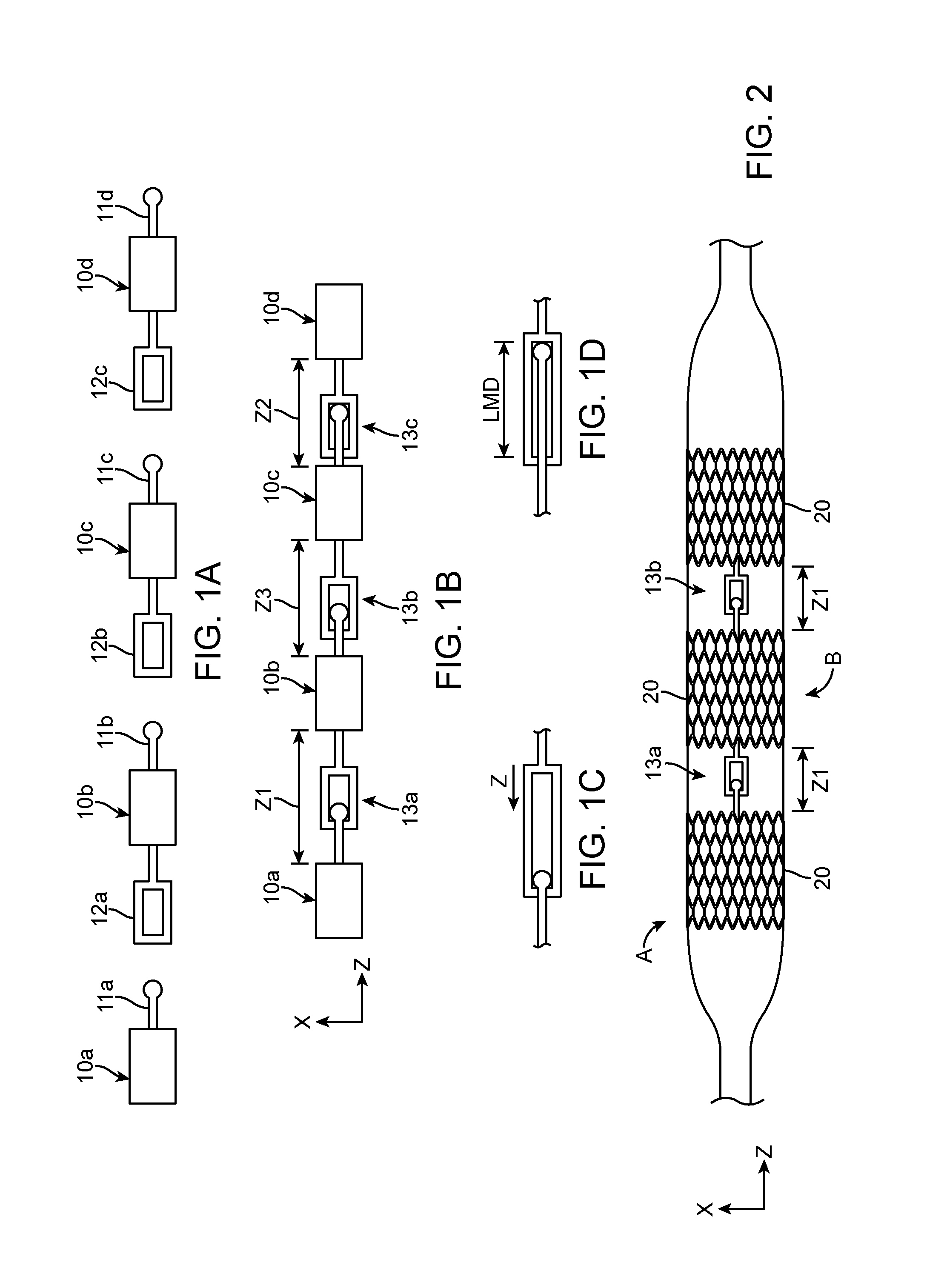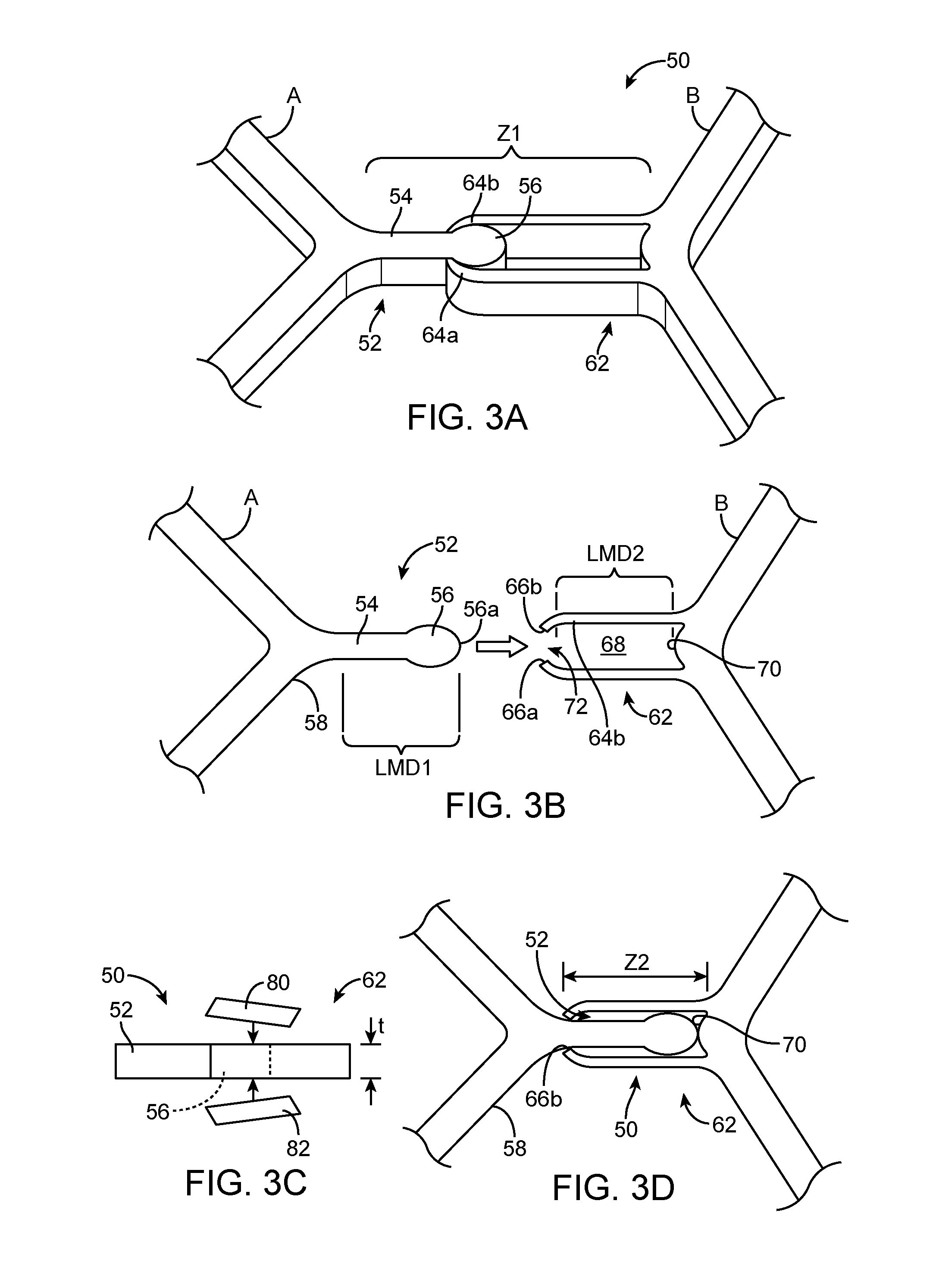Coupled scaffold segments
a scaffold and segment technology, applied in the field of bioresorbable scaffolds, can solve the problems of high stress, several complexities, external forces applied by the peripheral-vessel's implant environment, etc., and achieve the effects of reducing fatigue life, reducing fatigue life, and reducing the loading of ring elements
- Summary
- Abstract
- Description
- Claims
- Application Information
AI Technical Summary
Benefits of technology
Problems solved by technology
Method used
Image
Examples
first embodiment
[0102]FIGS. 3A-3D depict aspects of a coupling, which may be regarded as a ball and socket type coupling according to the disclosure. The coupling 50 includes a pin or male portion 52 and a slot female portion 62. The male and female portions 52, 62 are formed integrally with the respective segments A and B, as illustrated. Additionally, a rivet, pin or cover, illustrated schematically as top and bottom covers, pieces or heads 80, 82 welded or glued to the inner and outer surfaces of the female portion 62 to retain the male portion within the female slot 68 during movement of the segment A or B. As such, there is only Z translation permitted between segment A and segment B. Specifically, when the segments A and B are spaced by Z1, FIG. 3A, they may only freely translate towards each other. And when the segments A and B are spaced by Z2, FIG. 3D, they may only freely translate away from each other.
[0103]The DOF of the joint defined by coupling 50 is Z translation only.
[0104]The Z1 di...
second embodiment
[0108]FIGS. 4A-4D depict aspects of a coupling, which may be regarded as a flexible coupling or hook and loop coupling according to the disclosure. The coupling 100 includes identical arms 102, 112 forming hooks 114a and 114b configured to receive a flexible band 106. FIGS. 4C and 4D show the fully assembled coupling 100. FIG. 4A shows the coupling 100 less the flexible band 106. Referring to FIG. 4B the hook 114 may include an edge 116 configured to deflect outwardly about a living hinge 118 formed as a narrowed portion of the material, as illustrated. The flexible band 106 may then be slipped into the space 118 where it is retained. The flexible band 106 may be made of a bioresorbable elastomer, e.g., a “rubber band” or a flexible bioresorbable polymer. The segment is made from a first polymer and the band is made from a second polymer, wherein the second polymer has a material stiffness that is substantially less than (i.e., by a factor of 2, 5, 10) and / or elongation to break tha...
PUM
 Login to View More
Login to View More Abstract
Description
Claims
Application Information
 Login to View More
Login to View More - R&D
- Intellectual Property
- Life Sciences
- Materials
- Tech Scout
- Unparalleled Data Quality
- Higher Quality Content
- 60% Fewer Hallucinations
Browse by: Latest US Patents, China's latest patents, Technical Efficacy Thesaurus, Application Domain, Technology Topic, Popular Technical Reports.
© 2025 PatSnap. All rights reserved.Legal|Privacy policy|Modern Slavery Act Transparency Statement|Sitemap|About US| Contact US: help@patsnap.com



